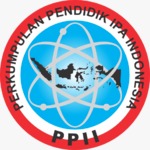The Effect of an IoT-Based DC Power Measurement Instrument Utilizing Arduino NodeMCU on the Outcomes of Basic Physics Laboratory Practicum
DOI:
https://doi.org/10.29408/kpj.v9i2.30362Keywords:
IoT, Arduino, Power Measurement, Physics Education, N-Gain.Abstract
In Basic Physics instruction, particularly in laboratory experiments involving direct current (DC) circuits, the need for accurate, real-time, and efficient power measurement tools is critical. Traditional instruments often fall short in delivering such performance, leading to errors and delays in data analysis. To address this issue, this study developed and implemented an Internet of Things (IoT)-based power measurement tool utilizing Arduino NodeMCU, capable of real-time data transmission and processing through Wi-Fi connectivity. The integration of current and voltage sensors enables more accurate and accessible DC power measurements for educational purposes.This research employed a quantitative approach using a one-group pretest-posttest quasi-experimental design. A total of 12 students enrolled in the Basic Physics Laboratory course participated in the study. The effectiveness of the tool was evaluated through pretest and posttest assessments, student response questionnaires, and observational data. Normality testing (Shapiro-Wilk) showed that both pretest (p = 0.262) and posttest (p = 0.284) scores were normally distributed. A paired sample t-test revealed a significant improvement in students’ conceptual understanding (t = -8.20, p = 5.14 × 10⁻⁶). The average normalized gain (N-Gain) score was 0.565, indicating a medium level of improvement, with 75% of students falling in the medium category and 25% in the high category. Student feedback also reflected a positive perception of the tool, with an average response score of 84.5 out of 100. These results suggest that the IoT-based measurement tool not only enhances the accuracy and efficiency of data collection in Basic Physics experiments but also improves students’ conceptual understanding and engagement. The innovation aligns with modern educational goals by integrating digital technology into science instruction, preparing students for real-world scientific and technological challenges.
References
Abichandani, P., Sivakumar, V., Lobo, D., Iaboni, C., & Shekhar, P. (2022). Internet-of-Things Curriculum, Pedagogy, and Assessment for STEM Education: A Review of Literature. IEEE Access, 10, 38351–38369. https://doi.org/10.1109/ACCESS.2022.3164709
Anggraeni, H., Fauziyah, Y., & Fahyuni, E. F. (2019). Penguatan Blended Learning Berbasis Literasi Digital dalam Menghadapi Era Revolusi Industri 4.0. Al-Idarah : Jurnal Kependidikan Islam, 9(2).
Ardianti, S. D., & Raida, S. A. (2022). The Effect of Project Based Learning with Ethnoscience Approach on Science Conceptual Understanding. Journal of Innovation in Educational and Cultural Research, 3(2), 207–214. https://doi.org/10.46843/jiecr.v3i2.89
Ayu Permata Sari, D., Maulida Fauziah, A. N., Astriani, D., Susiyawati, E., & Waliyyul Mursyidah, R. (2023). Pelatihan Penyusunan Lembar Kerja Peserta Didik Berbasis Project-Based Learning Untuk Guru Ipa Kabupaten Magetan. BERNAS: Jurnal Pengabdian Kepada Masyarakat, 4(1), 647–658. https://doi.org/10.31949/jb.v4i1.4192
Isnaini, M., Fujiaturahman, S., Utami, L. S., Zulkarnain, Z., Anwar, K., Islahudin, I., & Sabaryati, J. (2021). Pemanfaatan Aplikasi Scratch Sebagai Alternatif Media Belajar Siswa “Z Generation” Untuk Guru-Guru Sdn 1 Labuapi. SELAPARANG Jurnal Pengabdian Masyarakat Berkemajuan, 5(1), 871. https://doi.org/10.31764/jpmb.v5i1.6554
Isnaini, M., Zulkarnain, Z., Islahudin, I., Utami, L. S., & Anwar, K. (2022). Pengaruh Media Instagram #Physics in My Live Model Blended Learning Pada Pembelajaran Fisika Terhadap Keterampilan Berpikir “Z Generation.” ORBITA: Jurnal Pendidikan Dan Ilmu Fisika, 8(1), 181. https://doi.org/10.31764/orbita.v8i1.8657
Marga, K. M., Isnaini, M., & Utami, L. S. (2018). Pengaruh Media Kokami (Kotak Dan Kartu Misterius) Terhadap Keterampilan Berpikir Kritis Dan Motivasi Belajar Siswa Kelas Viii Smp Negeri 19 Mataram Tahun Pelajaran 2017/2018. ORBITA: Jurnal Kajian, Inovasi Dan Aplikasi Pendidikan Fisika, 4(2), 18. https://doi.org/10.31764/orbita.v4i2.573
Pangestu, A. D., Ardianto, F., & Alfaresi, B. (2019). Sistem Monitoring Beban Listrik Berbasis Arduino Nodemcu Esp8266. Jurnal Ampere, 4(1), 187. https://doi.org/10.31851/ampere.v4i1.2745
Permatasari, A., Yuberti, Y., & Anggraini, W. (2019). Pengembangan Lampu Sensor Berbasis Arduino Uno Sebagai ALat Peraga Fisika. Indonesian Journal of Science and Mathematics Education, 2(3), 380–387. https://doi.org/10.24042/ijsme.v2i3.4364
Purwanto, B. (2019). Pentingnya Kreativitas Guru dan Calon Guru Fisika SMA Dalam Upaya Pengembangan dan Pengadaan Alat Demonstrasi/Eksperimen Untuk Menjelaskan Konsep Dasar Fisika. Prosiding Seminar Nasional Penelitian, Pendidikan Dan Penerapan MIPA, 1, 229–238.
Ramadhan, M. F., Mundilarto, M., Ariswan, A., Irwanto, I., Bahtiar, B., & Gummah, S. (2023). The Effect of Interface Instrumentation Experiments-Supported Blended Learning on Students’ Critical Thinking Skills and Academic Achievement. International Journal of Interactive Mobile Technologies, 17(14), 101–125. https://doi.org/10.3991/ijim.v17i14.38611
Verawati, Y., Hamdani, D., & Setiawan, I. (2022). Pengembangan Alat Peraga Pada Materi Energi Dengan Menggunakan Solar Cell, Sensor Ultrasonik Dan Light Dependent Resistor Berbasis Arduino Uno. Amplitudo : Jurnal Ilmu Pembelajaran Fisika , 1(2), 166–173.
Downloads
Published
Issue
Section
License
Copyright (c) 2025 Kappa Journal

This work is licensed under a Creative Commons Attribution-ShareAlike 4.0 International License.
Semua tulisan pada jurnal ini menjadi tanggungjawab penuh penulis. Jurnal Kappa memberikan akses terbuka terhadap siapapun agar informasi dan temuan pada artikel tersebut bermanfaat bagi semua orang. Jurnal Kappa dapat diakses dan diunduh secara gratis, tanpa dipungut biaya, sesuai dengan lisensi creative commons yang digunakan







